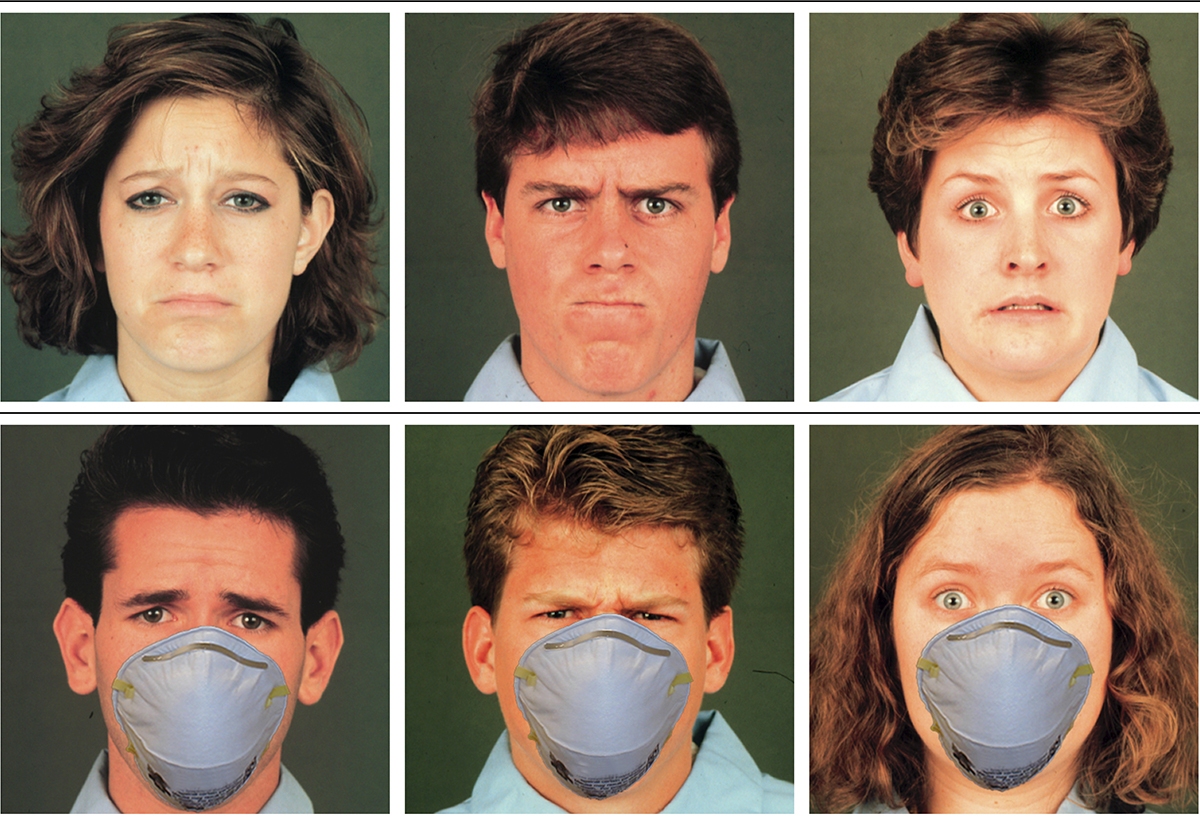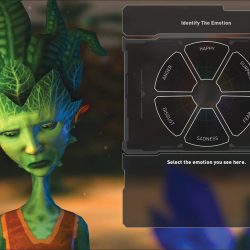The Emotion Behind the Mask
In a new world of face coverings, kids can still decode expressions.

Researchers showed children photos of covered and uncovered faces displaying sadness, anger, or fear. Ashley Ruba
The proliferation of face coverings to keep COVID-19 in check isn’t preventing kids from understanding facial expressions, according to a new study by UW psychologists.
“We now have this situation where adults and kids have to interact all the time with people whose faces are partly covered, and a lot of adults are wondering if that’s going to be a problem for children’s emotional development,” says Ashley Ruba, a postdoctoral researcher at the Waisman Center’s Child Emotion Lab.
The researchers showed more than 80 children, ages seven to 13, photos of faces displaying sadness, anger, or fear that were unobstructed, covered by a surgical mask, or wearing sunglasses. The kids were asked to assign an emotion to each face from a list of six labels. The faces were revealed slowly, with scrambled pixels of the original image falling into their proper place over 14 stages to better simulate the way real-world interactions may require piecing things together from odd angles or fleeting glimpses.
The kids were correct about the uncovered faces as often as 66 percent of the time. With a mask in the way, they correctly identified sadness about 28 percent of the time, anger 27 percent of the time, and fear 18 percent of the time.
“Not surprisingly, it was tougher with parts of the faces covered,” Ruba says. “But even with a mask covering the nose and mouth, the kids were able to identify these emotions at a rate better than chance. … Kids are able to adjust to the information they’re given, and it doesn’t look like wearing masks will slow down their development in this case.”
Published in the Summer 2021 issue



Comments
No comments posted yet.